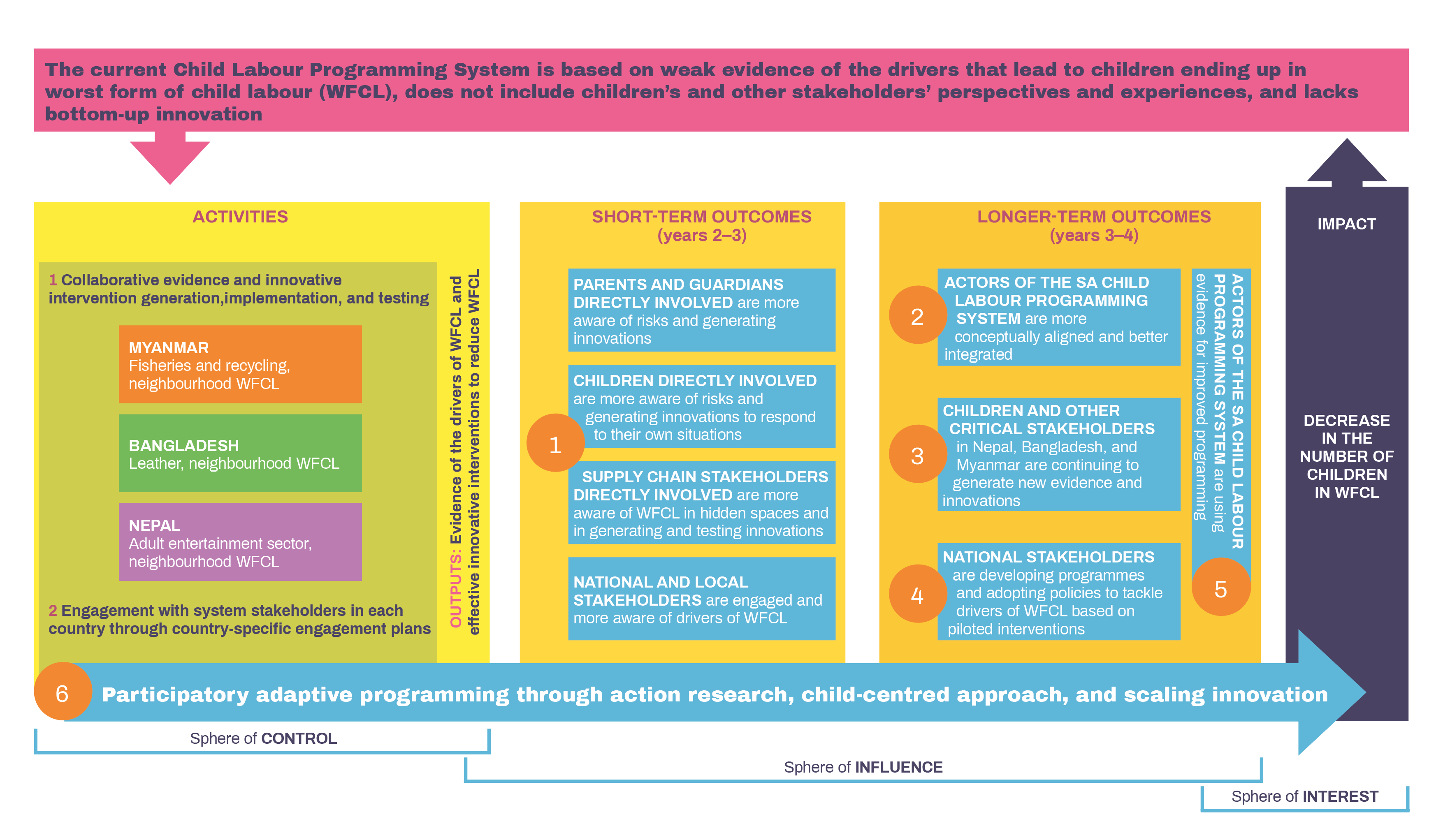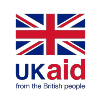There is weak evidence of what leads children into the most exploitative and dangerous forms of labour. What we do know is that the issue of worst forms of child labour (WFCL) addressed by the Child Labour: Action-Research-Innovation in South and South-Eastern Asia (CLARISSA) consortium has all the elements of a “complex” problem. There are multiple drivers, stakeholders and pathways that interact to enable WFCL. CLARISSA embraces this complexity by generating evidence and innovation through the implementation and evaluation of programme activities and interventions. Evaluation plays a central role by tracking and recording emerging evidence and innovative responses.
Evaluation helps us respond to the emerging evidence
In the consortium, the role of evaluation is therefore not just to assess whether our activities work to reduce WFCL. It is there to help the programme adapt in response to emerging evidence. It also works to build up theory about how evidence and innovations are generated and in which contexts they work and for whom. This contributes to building an evidence base for future interventions. Central in this evaluation work is our approach to theories of change, which helps us make explicit how we think our activities will generate change.
However, because of the complexity of both the problem at hand (WFCL) and our response (participatory action research) we cannot determine beforehand how specifically our response is going to achieve the change and what outcomes will be produced. This calls for a flexible approach to ToC. This means that the ToC is not just a diagram with boxes and arrows (though it is part of it). It is a process of critical thinking with all partners that allows us to make our programme assumptions explicit. These programme assumptions are evaluated on an ongoing basis. The ToC will be ever-evolving as we learn through challenges and new evidence emerges through the process.
What’s our current Theory of Change?
We have been working closely with the consortium partners and in-country implementation teams to build a starting ToC for CLARISSA. At the moment, this is our current best-evidenced guess of how we will achieve change and what changes we are aiming for.
 CLARISSA takes a participatory, adaptive and child-centred approach to evidence and innovation generation to tackle WFCL. Two assumptions underpin our approach:
CLARISSA takes a participatory, adaptive and child-centred approach to evidence and innovation generation to tackle WFCL. Two assumptions underpin our approach:
- Effective and sustainable innovations are most likely generated when children (and their parents) are engaged in analysis of the situation and in developing solutions.
- Innovations will emerge when diverse stakeholders are brought together to analyse and generate solutions to problems they define.
We are undertaking two levels of activities in all countries in line with these assumptions (the yellow box). At the first level are evidence and innovation generating activities and implementing and testing of interventions. These activities are conducted with local partners in specific urban and peri-urban neighbourhood linked to supply chains and sectors in Bangladesh (leather), Myanmar (fisheries and recycling) and Nepal (adult entertainment sector). This also includes participatory action research to generate innovations with children, parents/guardians and supply and national stakeholders.
At the second level are engagement activities with specific system stakeholders (supply chain, national and local stakeholders) in each country through contextualised engagement plans. System stakeholders are related to the focal area of WFCL in each country (detailed in green boxes) that have been determined with local partners and informed by research scopings. Together these activities will generate evidence of the drivers of and effective innovative interventions to reduce WFCL (Outputs) in the specific sectors and neighbourhoods.
In the short term (2 to 3 years), the combination of these activities with children and parents/guardians will increase their awareness of risks associated with WFCL. These activities and increased awareness will motivate them to engage in generating further innovations. Similarly, for supply chain and other local and national stakeholders, we assume that the combination of activities will increase their awareness of WFCL in hidden domains of the supply chain (e.g. informal and unregulated spaces) and the risks to their business. The activities will motivate them to engage in generating innovations.
The increased awareness and generated evidence and innovations will lead to more systemic changes after 3 to 4 years. This will be achieved by children, parents/guardians and other stakeholders continuing to generate new evidence and innovative solutions. Those innovations that are found to be effective (through programme evaluation) will then be scaled horizontally and vertically. Horizontal scaling refers to a process of spread that comes about through other communities or stakeholders observing impact of the innovations and adopting or using learning to create further change. Vertical scaling refers to uptake by other programmes, NGOs and governments then implementing the piloted innovations and using the learning across other settings. National stakeholders, we assume, will begin to adopt policies based on piloted larger interventions because of the ongoing sharing of evidence through quality engagement strategies. Finally, through facilitated interactions across diverse actors of the South Asia Child Labour programming system the actors will be more conceptually aligned and better integrated. These facilitated interactions, testing and generating evidence of how interventions are working together with quality engagement strategies with actors of the South Asia Child labour programming system will enable use of evidence for improved programming.
Ongoing development
As CLARISSA is an evidence and innovation generation program, this ToC will be tested and then adapted as and when new evidence emerges. We will use the emerging evidence to further detail our assumptions. Given the unique context of CLARISSA in each country, country level ToCs will be developed – thus building ‘nested’ ToCs. Their development will be led by the country teams and based on contextualising the programme level ToC and from the consortium’s workstreams, stakeholder mapping, research scoping and the local context of worst forms of child labour.
Fundamentally, we cannot apply simple theories of change to the highly complex and evolving issues at the heart of the worst forms of child labour. As a consortium we fully embrace the complexities and will work to learn and develop the programme based on the emerging evidence.
